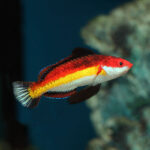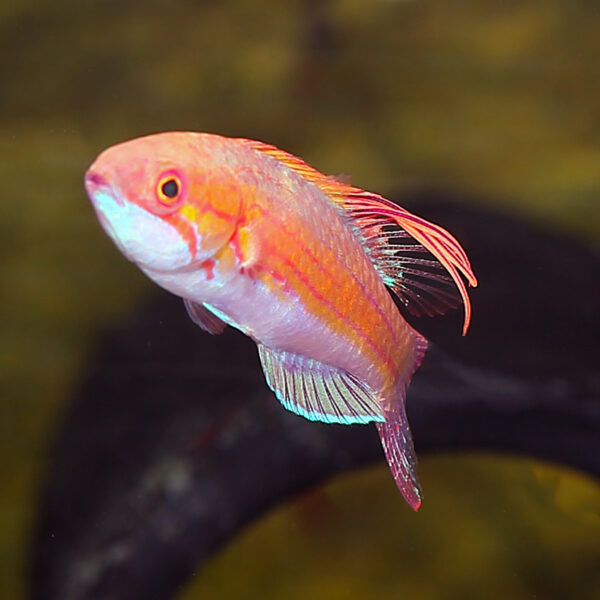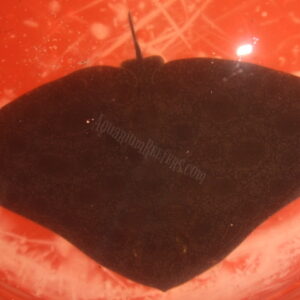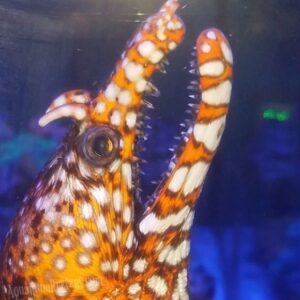Description
Filamented Flasher Wrasse, Paracheilinus filamentosus, are superb fish to have in your tank. Flasher wrasse have narrow, dart like forms and famously striking looks.
They have bright red orange bodies, that sport thin pink stripes. Pale bellies show off their glamour, as do their large, ornate fins. Their fins are mostly pink in colour. You can spot the males by a series of long spines along their back.
The name “Flasher wrasse” broadly describes the Paracheilinus genus. The name comes from distinctive courtship show the males put on. The brightly coloured boys dart around, flashing their fins at potential partners. While keeping other males away by showing off their spines.
Filamented Flasher Wrasse, Paracheilinus filamentosus, Ecology:
Filamented Flasher Wrasse live in the Indo-Pacific and Eastern Indian Ocean. They range from: the Philippines, Indonesia, Taiwan, Australia and the Andaman sea. They gather on outer reefs slopes. Darting between the passageways and amongst rubble.
The habitat helps the wrasse avoid predation. Unlike some, these fish do not bury themselves to sleep or hide. Instead, they have quite a nifty trick. In order to sleep safely, Filamented Flasher Wrasse find a nook they like. They then envelope themselves in a protective mucus coat. Supposedly, this hides the wrasses scent from predators. These sticky invisibility cloaks do not degrade your water quality like some coral wax jackets’ might.
Filamented Flasher Wrasse live in groups with one male to a few or more females. These fish are protogynous hermaphrodites. Which means that, when they get old enough, breeding females turn to males. As a result, all juveniles are immature females.
Wrasse In the Aquarium:
It is important to imitate the natural environment, by making plenty of nooks and crannies for the fish to hide in. Hobbyists should invest in a jump guard to prevent any unfortunate mishaps.
Filamented Flasher Wrasse do best when fed a varied diet. They will accept enriched frozen mysis shrimp and enriched frozen brine shrimp. They will also devour live foods, such as copepods and amphipods, that can be cultivated in attached refugium. Over time they will accept high-quality pellet or flake. We adapt all our wrasse to aquarium life before they leave us. We focus on their health, and most are eating a good quality flake food and/or pellet, such as JBL Maris, before being offered for sale.
The Fish pictured here are representative only and the livestock you receive may vary in pattern, coloration, and shape.









Reviews
There are no reviews yet.